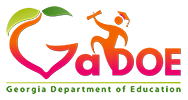Transition services
(a) A coordinated set of activities for a child with a disability that:
1. Is designed to be within a results-oriented process, that is focused on improving the academic and functional achievement of the child with a disability to facilitate the child's movement from school to post-school activities, including postsecondary education, vocational education, integrated employment (including supported employment), continuing and adult education, adult services, independent living, or community participation;
2. Is based on the individual child's needs, taking into account the child's strengths, preferences and interests; and includes instruction; related services; community experiences; the development of employment and other post-school adult living objectives; and if appropriate, acquisition of daily living skills and functional vocational evaluation.
(b) Transition services for children with disabilities may be special education, if provided as specially designed instruction, or a related service, if required to assist a child with a disability to benefit from special education. [34 C.F.R. § 300 .43]
Transition services (160-4-7-.06) begin no later than entry into ninth grade or by age 16, whichever comes first, or younger if determined appropriate by the IEP Team and updated annually, the IEP must include:
(a) Appropriate measurable postsecondary goals based upon age appropriate transition assessments related to training, education, employment, and, where appropriate, independent living skills; and
(b) The transition services (including courses of study) needed to assist the student in reaching those goals. [See 34 C.F.R. § 300.320(b)(1) – (2)]
Transition Professional Learning and Technical Assistance 2023-2023 (TBD)
Transition Compliance PowerPoints
Resources
Return to main Transition webpage

